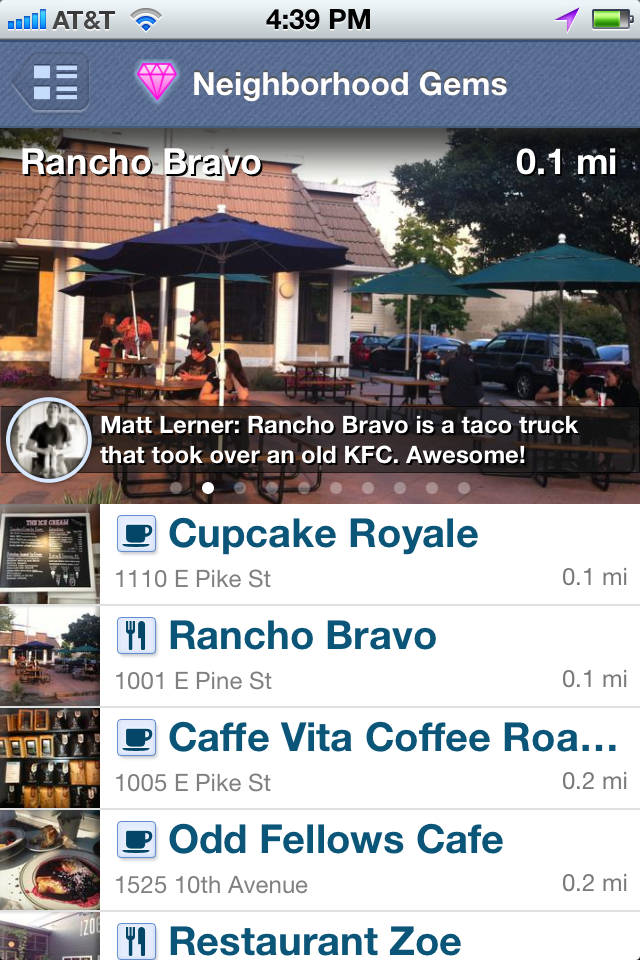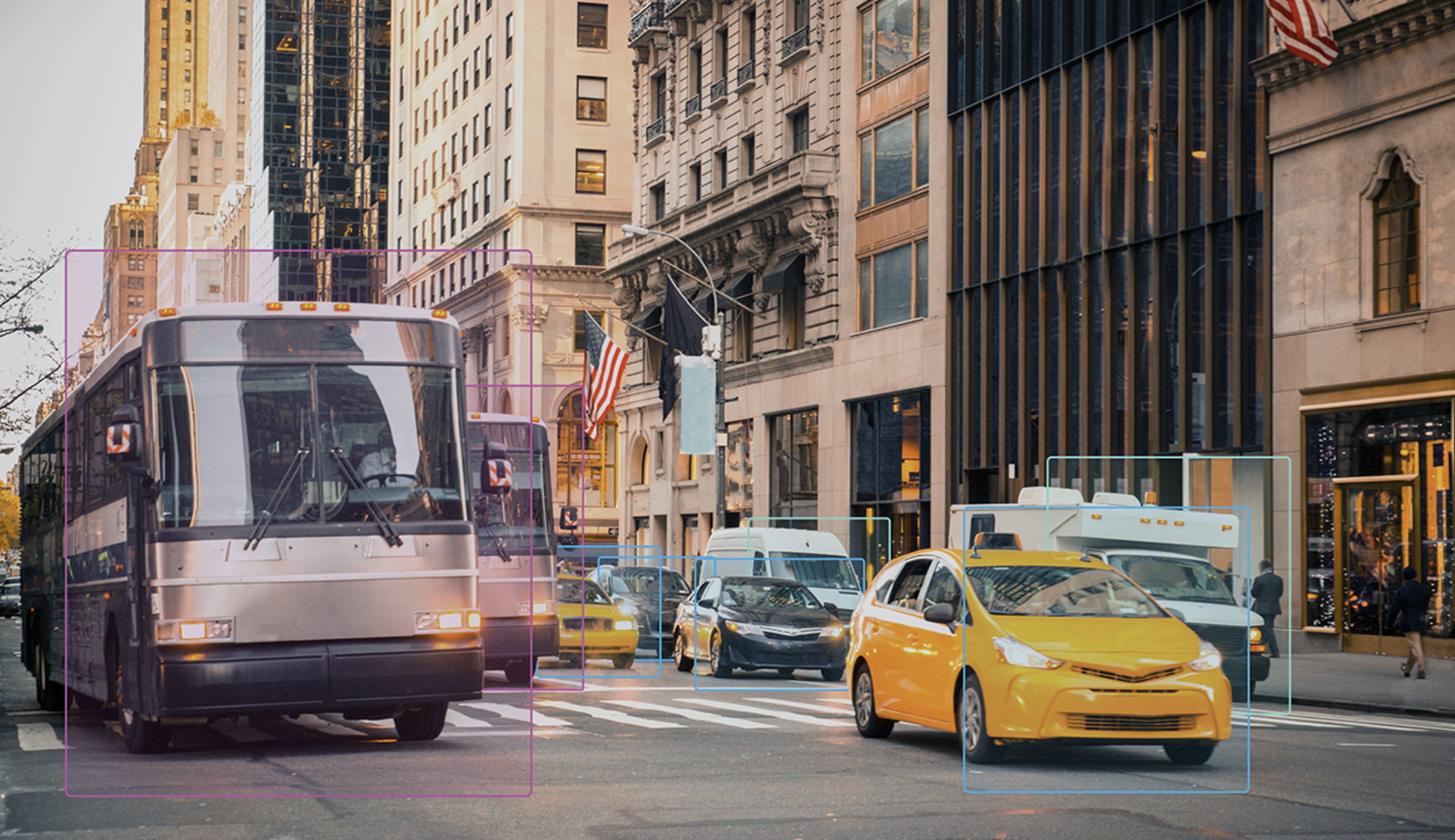Walk Score is a service that quantifies how walkable your neighborhood is and helps connect people with housing in areas where they can live car-free or car-lite. It's a widely-used and practical tool, but it can be a little frustrating: Like anything so data-driven, it can leave out some of the intangible things you love most about where you live. Today, Walk Score is trying to solve that problem by launching a new iPhone app and website, seeking to harvest all those unquantifiable neighborhood attributes.

“Nobody knows your neighborhood better than you do,” said Josh Herst, CEO of Walk Score. “Every day we hear from people telling us how special their neighborhoods are, pointing out their wonderful tree-lined sidewalks, outdoor spaces, nearby restaurants and locally owned shops.”
“They might say, ‘Well, I got a walk score of 50, which seems about right because I can’t actually walk that many places, but I just want you to know we have the most beautiful, old, tree-lined streets, and the architecture here is really wonderful,’” added Walk Score co-founder Matt Lerner. “’And we feel like when people look up the score on Walk Score they just get this number, 50, that doesn’t capture why we love our neighborhood.’”
Herst says that by adding this “rich local insight” to Walk Score, they’ll be able to provide more accurate depictions of different areas, all toward their goal of allowing people to “drive less and live more.”
They point to a 2010 study by the Knight Foundation and Gallup, which identified the three qualities that create emotional attachment to neighborhoods:
- Social and cultural opportunities and gathering spots
- Community openness to diversity
- Appealing aesthetics
“So that’s the thing we’re trying to capture,"” Lerner said, "the aesthetics and experience of a neighborhood, which has always been the weakness of walk score. It’s always just kind of been a number and a map.”
Walk Score is appealing to local experts to share these qualities which might otherwise be left out of the data. They want to crowd-source information about neighborhood gems and problem spots to create neighborhood tours with maps, pictures and comments about nearby amenities. To be a “local expert,” all you have to do is submit 10 photos and comments.
For now, most of this crowd-sourced information will be provided in addition to the numerical score, but eventually it will contribute to the score. “This is easiest to imagine in the case of missing places, like, 'the coffee shop near my house wasn't in your database,'” said Lerner. Walk Score would also like to have some crowd-sourced components of the score for things like aesthetics and safety – “but this is trickier, since more reports might mean more people using our app, rather than more actual problems in that area,” Lerner said.
One challenge with Walk Score that might actually get worse with the new public input is the potential for different demographics to use and view neighborhood amenities differently. Any nearby grocery store increases the walk score of an address (as long as it sells produce, Walk Score's criterion for what counts as a grocery store), but not everyone uses the closest grocery store. If there’s a Salvadoran bodega or Ethiopian market near my house but I still drive to Whole Foods because I only buy organic produce and almond milk, the walkability of those bodegas doesn’t help me walk more. Conversely, if I live right next door to the Whole Foods but can't afford it, and the bodega the next town over has malanga or berbere that I can’t find anywhere else, I’ll drive to the bodega. The same goes for bars – I might walk past the pool hall to the wine bar or vice versa. And on and on.
“That’s been a challenge with Walk Score since the beginning,” Lerner acknowledges. In the past, at least, all amenities would be put in the score equally, although different people would respond to them differently. But now, votes and comments and pictures submitted by app users will elevate certain places over others. The digital divide might keep the malanga vendor from reaching “neighborhood gem” status while the wine bar gets lots of votes, just by nature of who’s using the technology. “All online crowd-sourced projects have access issues,” said Lerner.
That can also mean that walkability and safety problems in otherwise walkable neighborhoods get over-reported. “It’s very likely that the people who use our product will be in walkable neighborhoods, and because they report more problems there doesn’t mean there are more problems there,” Lerner said. “The qualitative stuff is a little harder.”
Still, Walk Score has a lot of fans, and they won’t be disappointed by this new feature. “Few single actions have helped advance the cause of walkable neighborhoods more than the launch of WalkScore.com a few years ago,” wrote David Goldberg of Transportation for America this morning. And now, “whether you are considering a move or just want to learn more about neighborhoods around you, you can benefit from, and take part in, the aggregation of inside dope on what the place is really like. And what could be more fun: Take a walk in the neighborhood, shoot photos of the cool farmers market, public art or hang-out, document the missing crosswalk or dodgy intersection, and share with everyone else.”
Goldberg mentions that this new Walk Score apps complements others like SeeClickFix, which allow people to flag repair issues that need addressing, and Blockee, which helps people envision improvements to the streetscape.
The information from Walk Score can be used to push local leaders to address identified problem spots, but Lerner said he more often sees it used to promote walkability. He said Washington, DC’s planning director, Harriet Tregoning, uses Walk Score in community meetings. “When people get nervous about new developments, she tends to phrase it in terms of, ‘Your walk score is going to go up by ten points, and here’s a study that shows that when walk scores go up, people’s home values go up.’”





